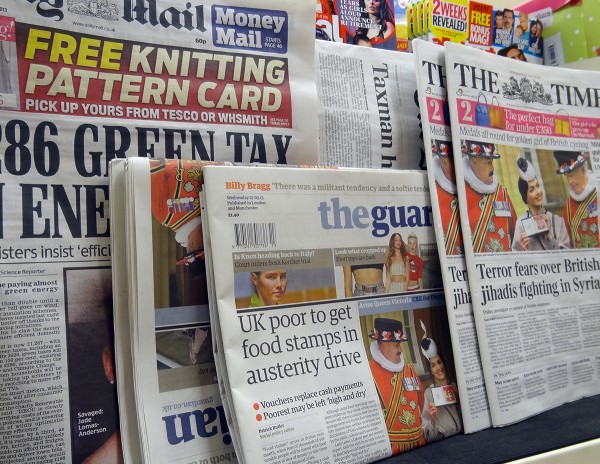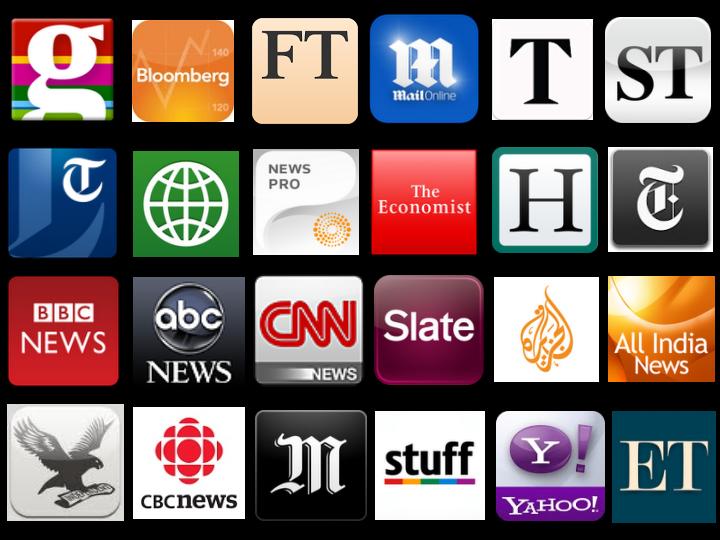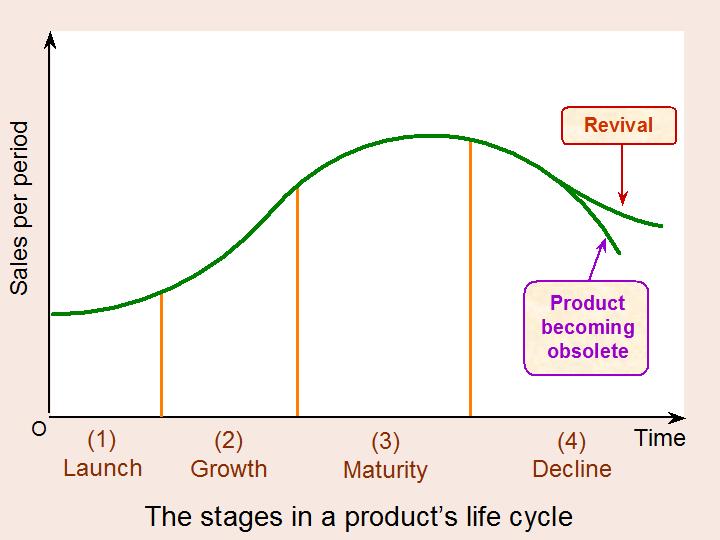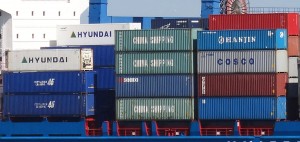 According to the BBC’s Joe Lynam, “Britain has the most competitive and dynamic retail environment in the world, which attracts shoppers globally.” It is perhaps this fact which may save BHS, with new owners being attracted by such an opportunity. BHS is soon expected to file for administration, with debts of more than £1.3 billion and having failed to secure the loan needed to keep it afloat. If this company collapses, it will bring an end to the life of an 88 year old giant.
According to the BBC’s Joe Lynam, “Britain has the most competitive and dynamic retail environment in the world, which attracts shoppers globally.” It is perhaps this fact which may save BHS, with new owners being attracted by such an opportunity. BHS is soon expected to file for administration, with debts of more than £1.3 billion and having failed to secure the loan needed to keep it afloat. If this company collapses, it will bring an end to the life of an 88 year old giant.
The British retail scene has certainly changed over the past decade, with names such as Woolworths and Comet disappearing – could BHS be the next casualty of the changing retail climate? In the world of retail, tastes change quickly and those stores who fail to change with the times are the ones that suffer. One of the factors behind the downfall of BHS is the ‘dated’ nature of its stores and fashions. As clothing outlets such as Zara, Oasis and Next have continued to change with the times, commentators suggest that BHS continues with a trading offer from the 1980s. With the online shopping trend, many household names adapted their strategy, but BHS failed to do so and the second chance that BHS asked the public for when Sir Philip Green, its former owner, sold BHS in 2015 hasn’t materialised.
With administrators ready to be brought in and thousands of jobs hanging in the balance, the administrators will be looking at methods to attract funding, new owners or so-called ‘cherry pickers’ who may be interested in buying up the more profitable stores. Some of their stores remain in prime locations and deliver a tidy profit and it is perhaps these gems, together with the tradition that British Home Stores brings that may yet see the company saved. The outcome for BHS will not only affect the jobs of its employees, but will affect the pensions of thousands of workers. The BHS pension fund currently has a deficit of £576 million and so the Pension Protection Fund will have to look closely at the situation before thinking about issues a contribution notice to those connected with the fund.
A deal was on the cards last week, with BHS owner Dominic Chappell in talks with Mike Ashley’s Sports Direct, but the high debts and pensions deficit appears to have deterred this deal. The failing fortunes of BHS have now come back to haunt former owner, Sir Philip Green, who in March 2015, sold the business for just £1. Sir Philip may return to save the day, but the options for this once giant of the British high street are rather limited. The following articles consider the fortunes of BHS.
BHS seeks Sports Direct lifeline as it heads for collapse The Guardian, Graham Ruddick (24/04/16)
BHS expected to file for administration on Monday BBC News (25/04/16)
Thousands of BHS workers face anxious wait amid administration fears The Telegraph (25/04/16)
BHS administration: ‘Imminent bankruptcy’ puts 11,000 jobs at risk Independent, Peter Yeung (25/04/16)
Up to 11,000 jobs face the axe as BHS is expected to announce collapse of chain after efforts to find rescuer failed Mail Online, Neil Craven (24/04/16)
BHS nears collapse putting 11,000 jobs at risk Sky News (25/04/16)
BHS set to file for administration after sales talks fail Financial Times, Murad Ahmed (25/04/16)
Questions
- Using a demand and supply diagram, can you explain some of the factors that have contributed to the difficult position that BHS finds itself in?
- Now, can you use a diagram showing revenues and profits and explain the current position of BHS?
- What type of market structure does BHS operate in? Can this be used to explain why it is in its current position?
- How has the company failed in adapting its business strategy to the changing times?
- Looking back at the history of BHS, can you apply the product life cycle to this store?
- If another company is considering purchasing BHS, or at least some of its stores, what key information will it need and what might make it likely to go ahead with such a purchase?
 Technology and the Internet have both good and bad sides, whether it’s for businesses or consumers. Many opportunities have been created, such as access to global markets, cheaper and easier transport and communication and better sources of supply. But with this opportunity comes threats, especially for businesses. We’ve seen the emergence of new online-based companies and in some cases these have contributed to the demise of other firms. In this News Item we look at the impact on the newspaper industry.
Technology and the Internet have both good and bad sides, whether it’s for businesses or consumers. Many opportunities have been created, such as access to global markets, cheaper and easier transport and communication and better sources of supply. But with this opportunity comes threats, especially for businesses. We’ve seen the emergence of new online-based companies and in some cases these have contributed to the demise of other firms. In this News Item we look at the impact on the newspaper industry.
Media is one industry that has been significantly affected by technological developments. Newspaper readership has been in decline for many years and this is even the case for the most widely read UK paper – The Daily Telegraph. However, according to Seamus Dooley, Irish secretary of the National Union of Journalists, it’s not the end of the industry:
It is an industry in crisis, but I don’t accept it is an industry in terminal decline.
More and more information has become freely available online and just as we would expect in any other sector, the newspaper industry has had to respond. To keep their readers, newspapers across the world provide thousands of articles on all topics on their websites. But if news can be accessed freely, why bother purchasing a newspaper? This is the problem facing the Daily Telegraph, the Independent, the Daily Mail etc – the number of newspapers sold has declined and thus so have revenues and profits.
 One option is to charge consumers for reading the news by introducing a subscription to the online articles. The Financial Times already charges a fee to view articles online beyond a certain number and The Telegraph is soon to follow suit. Back in 2010, The Times and Sunday Times launched their new websites, which charged readers for viewing articles. The model being adopted by The Telegraph is a little different, as a certain number of articles can be viewed for free before a price must be paid. International readers are already charged to view online material, but these new charges will apply to UK readers. With so much competition facing newspapers, the number of readers for The Telegraph will undoubtedly decline, but with newspaper readership falling, revenues must come from somewhere. Tony Gallagher has said:
One option is to charge consumers for reading the news by introducing a subscription to the online articles. The Financial Times already charges a fee to view articles online beyond a certain number and The Telegraph is soon to follow suit. Back in 2010, The Times and Sunday Times launched their new websites, which charged readers for viewing articles. The model being adopted by The Telegraph is a little different, as a certain number of articles can be viewed for free before a price must be paid. International readers are already charged to view online material, but these new charges will apply to UK readers. With so much competition facing newspapers, the number of readers for The Telegraph will undoubtedly decline, but with newspaper readership falling, revenues must come from somewhere. Tony Gallagher has said:
We want to develop a closer rapport with our digital audience in the UK, and we intend to unveil a number of compelling digital products for our loyal subscribers in the months ahead.
Differentiating the product is going to be essential for any newspaper that begins charging, as with so much information available online for free, they have to ensure they keep their readers. Establishing loyalty will be crucial. The following articles consider this change.
Telegraph extends paywall to UK readers BBC News (26/3/13)
The Telegraph: subscribe to Britain’s finest journalism The Telegraph (26/3/13)
Telegraph to put up metered paywall Guardian, Roy Greenslade (26/3/13)
The sun joins Telegraph in charging website users The Guardian, Lisa O’Carroll and Roy Greenslade (26/3/13)
Oh how Times are charging Sloman News Site March 2010
Telegraph introduces UK paywall Marketing Week, Lara O’Reilly (26/3/13)
Washington Post announces porous paywall Journalism.co.uk, Sarah Marshall (19/3/13)
Washington Post latest newspaper to put faith in paywalls The Guardian, Dominic Rushe (19/3/13)
Ireland’s newspapers suffer hard times Financial Times, Jamie Smythe (24/3/13)
Washington Post to start charging for website Wall Street Journal, Keach Hagey (18/3/13)
Questions
- Where would you put newspapers on the product life cycle? Explain your answer.
- How would you assess the effect of the development of technology and the internet for newspapers?
- Have readers of newspapers benefited from the internet?
- How might estimates of elasticity have been used to make the decision to charge to view online articles?
- Which consumers will be affected most by this new strategy?
- How might companies that don’t charge for online access benefit from this new strategy?
- Would you continue to read articles from The Times, the Financial Times, The Telegraph, etc. linked from this site if you had to pay to access them? If so, why? If not, why not?
- How much would you be prepared to pay to access online articles? How are the concepts of utility and consumer surplus relevant here?
- What effect will the paywall have on The Telegraph’s revenues and profits? Use a diagram to illustrate your answer.
 The high street has changed significantly over the past 50 years and is likely to continue to do so over the next 50 years. Much of these changes have occurred as a result of technological developments. However, one thing that has remained largely unchanged is the telephone box. Although there are fewer of them, with the majority of people owning a mobile phone, city centre high streets still have their fair share of phone boxes.
The high street has changed significantly over the past 50 years and is likely to continue to do so over the next 50 years. Much of these changes have occurred as a result of technological developments. However, one thing that has remained largely unchanged is the telephone box. Although there are fewer of them, with the majority of people owning a mobile phone, city centre high streets still have their fair share of phone boxes.
With tastes constantly changing, products and services come in and out of fashion. But with technology constantly developing, products and services that were once needed have become obsolete, replaced by their more advanced substitutes. We’ve seen e-commerce develop, such that long-standing high street retailers have faced closure and the development of mobile phones and other communication devices have meant that the once essential phone box is now rather redundant. At least, in its traditional function. The Mayor of New York, Michael Bloomberg said:
New York is the most dynamic city in the world, and while technology has changed all around us, the city’s payphones have remained mostly the same for decades.
 If we were to place the phone box on the product life cycle, it has certainly reached maturity and in many developed countries, even decline. But can extension strategies be used to create a new function for the phone box?
If we were to place the phone box on the product life cycle, it has certainly reached maturity and in many developed countries, even decline. But can extension strategies be used to create a new function for the phone box?
This is certainly happening in New York, where a reinvent challenge has been launched to help phone boxes adapt to technological innovation. Suggestions include using them as information sources, phone chargers, weather monitors and advertising boards. In the UK, phone boxes have even been fitted with defibrillators and are the first port of call for saving lives. But would this be enough to reinvent the phone box, whose numbers have fallen in New York from 35,000 to only 11,000?
Some say that the phone box is no longer relevant and while the idea of a ‘community hub’ remains appealing, the cost of maintaining them can be rather high. For others, the phone box is still essential, especially for those on lower incomes, who perhaps cannot afford what some people see as a necessity: a mobile phone. Are phone boxes, therefore, a means of ensuring access to communication for all socioeconomic groups? Also, perhaps for all age groups? As technology and tastes continue to change over the coming decades, the phone box will go in one of two directions: a revival or obsolescence. The following articles consider this.
New York phone boxes get new lease of life BBC News, Michael Millar (22/3/13)
Phone box in Ashwell is fitted with defibrillator to help save lives Rutland and Stamford Mercury (23/3/13)
Red Rutland phone box becomes 2000th life-saving hub ITV News, Pete Bearn (20/3/13)
The trashing of the iconic red phone box is one bad call Telegraph, Cristina Odone (11/3/13)
Questions
- Draw out the product life cycle. What examples of products and services can you find that fit in each stage?
- What are extension strategies? How do they help products that are in decline?
- When deciding whether or not to keep a phone box, what factors will be considered?
- How can phone boxes help to tackle inequality, especially of access?
- Are there any other products or services that fit into the decline stage? Which ones have had extension strategies applied and which have not?
- Do all products and services eventually enter the decline stage of the product life cycle? Can you think of any that haven’t? What has enabled them to survive?
 The technology sector is highly complex and is led by Apple. However, as the tablet market is continuing to grow, it is becoming increasingly competitive with other firms such as Samsung gaining market share. Although both firms sell many products, it is the growing tablet market which is one of the keys to their continued growth.
The technology sector is highly complex and is led by Apple. However, as the tablet market is continuing to grow, it is becoming increasingly competitive with other firms such as Samsung gaining market share. Although both firms sell many products, it is the growing tablet market which is one of the keys to their continued growth.
Tablet PCs have seen a growth in the final quarter of 2012 to a high of 52.5 million units, according to IDC. Although Apple, leading the market, has seen a growth in its sales, its market share has declined to 43.6%. Over the same period, Samsung has increased its market share from 7.3% to 15.1%. While it is still a huge margin behind Apple in the tablet PC market, Samsung’s increase in sales from 2.2 million to 7.9 million is impressive and if such a trend were to continue, it would certainly cause Apple to take note.
 It’s not just these two firms trying to take advantage of this growing industry. Microsoft has recently launched a new tablet PC and although its reception was less than spectacular, it is expected that Microsoft will become a key competitor in the long run. There are many factors driving the growth in this market and the war over market share is surely only just beginning. The chart shows the 75.3% growth in sales in just one year. (Click here for a PowerPoint of the chart.)
It’s not just these two firms trying to take advantage of this growing industry. Microsoft has recently launched a new tablet PC and although its reception was less than spectacular, it is expected that Microsoft will become a key competitor in the long run. There are many factors driving the growth in this market and the war over market share is surely only just beginning. The chart shows the 75.3% growth in sales in just one year. (Click here for a PowerPoint of the chart.)
A Research Director at IDC said:
We expected a very strong fourth quarter, and the market didn’t disappoint…New product launches from the category’s top vendors, as well as new entrant Microsoft, led to a surge in consumer interest and very robust shipments totals during the holiday season’
Apple has been so dominant in this sector that other companies until recently have had little success in gaining market share. However, with companies such as Samsung and ASUS now making in-roads, competition is likely to become fierce. There are already concerns that Apple’s best days are behind it and its share price reflects this. People are now less willing to pay a premium price for an Apple product, as the innovations of its competitors have now caught up with those of the leading brand name. The following articles consider this growing market.
Samsung gain tablet market share as Apple lead narrows BBC News (1/2/13)
Apple snatches US lead from Samsung Financial Times, Tim Bradshaw (1/2/13)
Apple revenues miss expectations despite high sales figures BBC News (24/1/13)
Samsung eats into Apple sales in the tablet market Mirror, Ruki Sayid (1/2/13)
MacWorld’s Apple celebration opens amid fears of tech giant’s decline Guardian, Rory Carroll (31/1/13)
Samsung’s tablet sales soar as Apple’s grip on market loosens Daily News and Analysis, Richard Blagden (2/2/13)
Samsung takes a nibble out of Apple’s tablet lead InfoWorld, Ted Samson(31/1/13)
Tablet Sales up 75% as Samsung and Asus Gain on Apple Interational Business Times, Edward Smith (31/1/13)
Questions
- Which factors are behind this exceptional growth in the tablet PC market?
- Using the Boston matrix, where do you think tablet PCs fit in terms of market size and market growth?
- Where would you place this market in terms of the product life cycle?
- What does the product life cycle say about the degree of competition, the impact on pricing on profits etc. in the phase that you placed the tablet PC market in your answer to question 3?
- Why have Apple’s shares fallen recently? Do you think this will be the new trend?
- Microsoft’s new tablet didn’t attract huge sales. What explanation was given for this? Use a diagram to help answer this question.
- Tablet PCs are relatively expensive, yet sales of them have increased significantly over the past few years. What explanation is there for this, given that we have been (and still are) in tough financial times?
 With globalisation, more and more businesses have found it beneficial to ‘go global’. There are many reasons why a firm might choose to expand its production or market to other countries and one particular advantage is cutting costs in the manufacturing of products.
With globalisation, more and more businesses have found it beneficial to ‘go global’. There are many reasons why a firm might choose to expand its production or market to other countries and one particular advantage is cutting costs in the manufacturing of products.
Countries such as China and India have become leaders in production. Look at many of the items you own – I’m sure you’ll see a ‘Made in China’ or ‘Made in India’ amongst them. These fast emerging countries were highly sought after as places to produce due to much cheaper production costs. This advantage led to Western companies outsourcing much of their manufacturing base to China, as a means of retaining a competitive advantage.
However, the cost advantages that China boasted are now less significant and we may be about to see the emergence of a new manufacturing hub. Other countries that are further behind the BRICS in the development process now have cost advantages over places like China and so we may see another transfer of manufacturing to other parts of the world.
 When splitting up a supply chain to gain cost advantages a key consideration is the extent to which you lose control. Communication and co-ordination issues can emerge when design takes place in one country; production in another and then the products are sold around the world. When cost differences are huge, these problems can be overlooked, as what they might cost you in terms of lost time etc. is easily made up by savings through cheaper labour.
When splitting up a supply chain to gain cost advantages a key consideration is the extent to which you lose control. Communication and co-ordination issues can emerge when design takes place in one country; production in another and then the products are sold around the world. When cost differences are huge, these problems can be overlooked, as what they might cost you in terms of lost time etc. is easily made up by savings through cheaper labour.
However, when the cost advantages of production in China shrink, companies are still left with the problems of communication and co-ordination. These now represent more significant costs that could be reduced were production to revert to the country of design or if production were to be moved to an even cheaper country.
The following article from BBC News considers the issues surrounding the supply chain and how businesses may benefit from more collaboration.
Better collaboration lets businesses take back the supply chain BBC News, Alastair Sorbie (15/6/12)
Questions
- What are the arguments for becoming a multinational?
- Why do host countries, such as the BRICS accept inward investment? What do they gain from it?
- Explain how the product life cycle can affect the profitability of a MNC and how the company might respond.
- What are the disadvantages to a MNC from ‘going global’?
- What are the problems faced by developing countries acting as host nations?
- How has technology affected both big and small businesses?
 According to the BBC’s Joe Lynam, “Britain has the most competitive and dynamic retail environment in the world, which attracts shoppers globally.” It is perhaps this fact which may save BHS, with new owners being attracted by such an opportunity. BHS is soon expected to file for administration, with debts of more than £1.3 billion and having failed to secure the loan needed to keep it afloat. If this company collapses, it will bring an end to the life of an 88 year old giant.
According to the BBC’s Joe Lynam, “Britain has the most competitive and dynamic retail environment in the world, which attracts shoppers globally.” It is perhaps this fact which may save BHS, with new owners being attracted by such an opportunity. BHS is soon expected to file for administration, with debts of more than £1.3 billion and having failed to secure the loan needed to keep it afloat. If this company collapses, it will bring an end to the life of an 88 year old giant.






